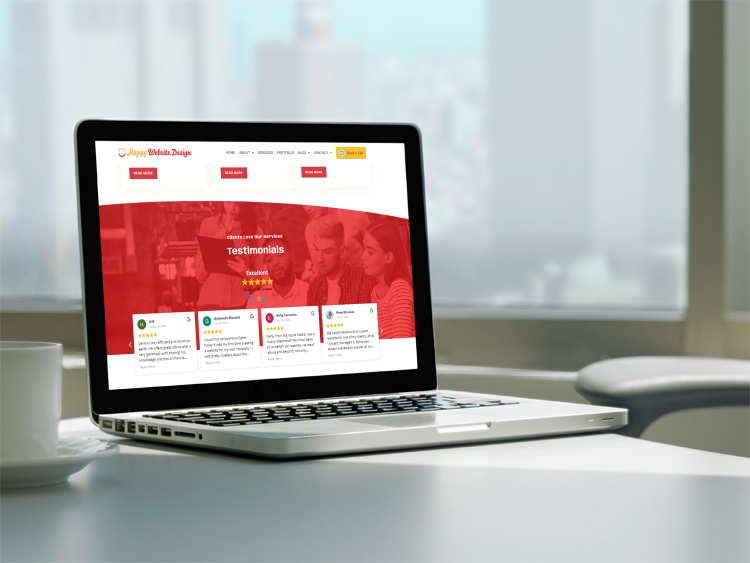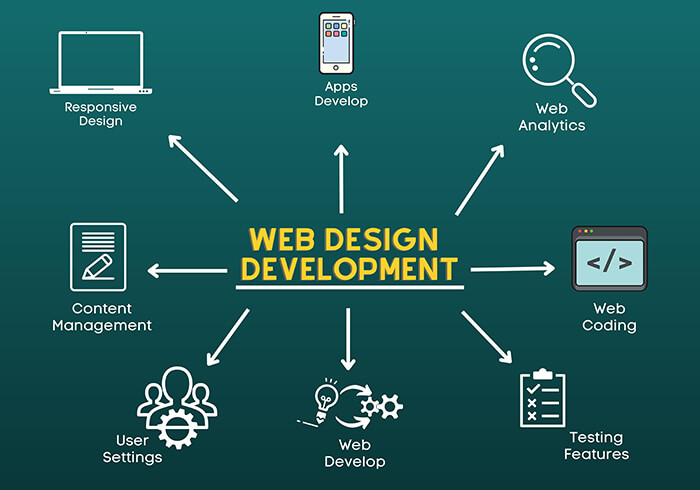Simplify your online journey with website development consulting.
Wiki Article
Produce a Balanced Online Experience With All Natural Website Design
In today's digital landscape, producing a well balanced online experience with alternative internet design is important for fulfilling the diverse requirements of customers. By prioritizing ease of access and straightening content technique with user preferences, companies can significantly enhance interaction.Recognizing Holistic Internet Style
This approach takes into consideration not only visual elements but additionally functionality, usability, and the psychological effect of the internet site on its customers. By seeing a website as an interconnected ecosystem, designers can guarantee that every element-- visual layout, material, navigation, and interactivity-- functions harmoniously to meet individual needs.

Incorporating an alternative point of view involves comprehending the target market and their particular demands, choices, and actions. It calls for an evaluation of how customers communicate with various aspects of the website and just how these communications influence their total experience. This technique likewise considers the wider context in which the site runs, consisting of brand name identity, marketing methods, and competitive landscape.
Eventually, a holistic approach to internet layout causes a much more appealing and efficient online existence. By prioritizing the user journey and cultivating a smooth experience across all touchpoints, developers can create sites that not only catch attention yet also urge continual communication and complete satisfaction. This extensive strategy advertises lasting success and fosters brand loyalty.
Key Concepts of Individual Experience

One crucial concept is functionality, which emphasizes the relevance of uncomplicated navigating and clear performance. Internet sites must be very easy to browse, allowing individuals to locate information swiftly. This is closely linked to consistency, where design elements, such as switches and food selections, ought to remain consistent throughout the site to improve familiarity and convenience of use.
One more substantial principle is responses, making sure that users are educated concerning their communications. Whether via aesthetic cues or alerts, feedback reinforces a sense of control and complete satisfaction. In addition, the principle of pecking order determines that info should be arranged rationally, directing individuals via web content effectively.
Finally, psychological style plays a crucial duty in UX. By evoking favorable emotions with appearances and interactions, designers can produce unforgettable experiences that cultivate individual loyalty - website development consulting. By sticking to these principles, web designers can create alternative experiences that resonate with individuals and satisfy their purposes
Relevance of Accessibility
Access is a critical facet of web layout that makes sure all users, no matter of their abilities or handicaps, can interact with electronic content effectively. By prioritizing accessibility, web developers create comprehensive settings that deal with diverse customer needs, enhancing overall individual experience.An available web site complies with established standards, such as the Web Material Access Standards (WCAG), which suggest practices like offering text alternatives for non-text content, making sure sufficient color contrast, and enabling key-board navigation. These methods not only serve individuals with impairments, such as aesthetic or acoustic disabilities, however likewise benefit various other user groups, consisting of those with situational restrictions or older adults.
Furthermore, the relevance of ease of access extends beyond moral considerations; it also affects service outcomes. A comprehensive web site can get to a wider target market, eventually leading to enhanced involvement and conversions. Additionally, ease of access conformity decreases the danger of lawful consequences associated to discrimination.

Integrating Material Approach
Developing a comprehensive electronic environment naturally leads to the need of a durable content method that lines up with customer demands. An efficient content approach functions as the backbone of holistic web design, guaranteeing that info is not only available yet additionally interesting and pertinent. It needs a deep understanding of the target audience, including their preferences, behaviors, and potential obstacles to gain access to.To integrate a content strategy effectively, organizations have to focus holistic web design on user-centric material development. This can be achieved with detailed audience research, which educates the kinds of material that will reverberate with individuals. In addition, content ought to be structured logically, making use of clear headings, bullet factors, and concise language to enhance readability.
Regular audits of content efficiency will certainly help in refining methods, ensuring the material continues to be fresh and aligned with individual assumptions. By prioritizing a natural web content strategy, organizations can produce a well balanced online experience that fosters engagement and availability for all customers.
Determining Success and Involvement
While a well-executed content technique develops the structure of all natural internet design, measuring success and interaction is vital for examining its effectiveness and leading future enhancements. Secret efficiency indicators (KPIs) such as page sights, bounce prices, and ordinary session period give measurable understandings right into customer habits. These metrics highlight which web content reverberates most with customers and where possible rubbing factors might exist.Additionally, qualitative steps, such as user feedback and studies, can provide deeper understandings into user satisfaction and involvement levels. Tracking social media communications and conversion prices likewise helps determine the efficiency of content in driving wanted actions, whether that be purchases, sign-ups, or info requests.
Utilizing devices like Google Analytics, heatmaps, and A/B testing can boost understanding of individual communication patterns and preferences. This information enables internet designers and material strategists to iterate on their designs, making sure that the online experience continues to be user-centered and lined up with business purposes.
Conclusion
By prioritizing individual demands and access, designers can create interconnected ecological communities that improve involvement and satisfaction. A well-aligned material approach further contributes to a cohesive user experience, while consistent feedback devices are important for cultivating loyalty.Report this wiki page